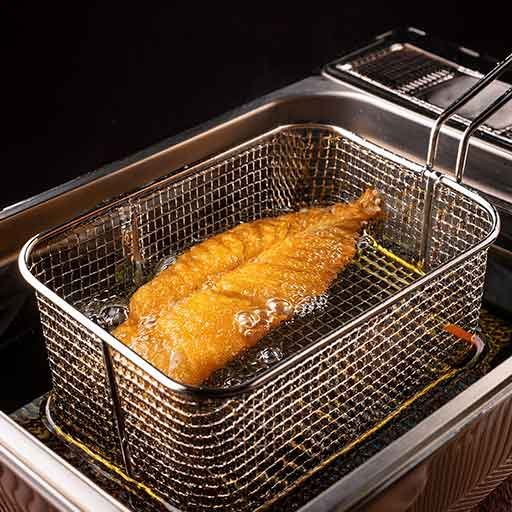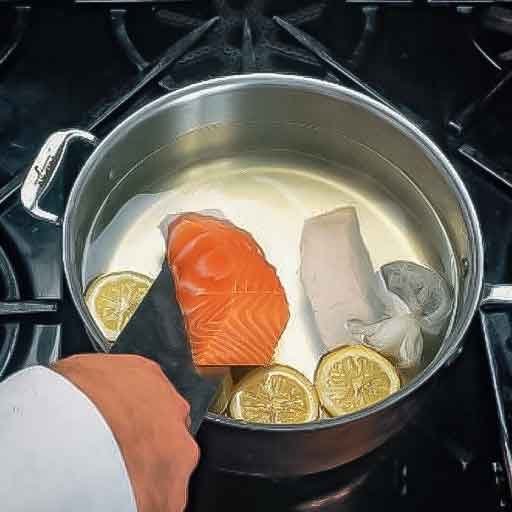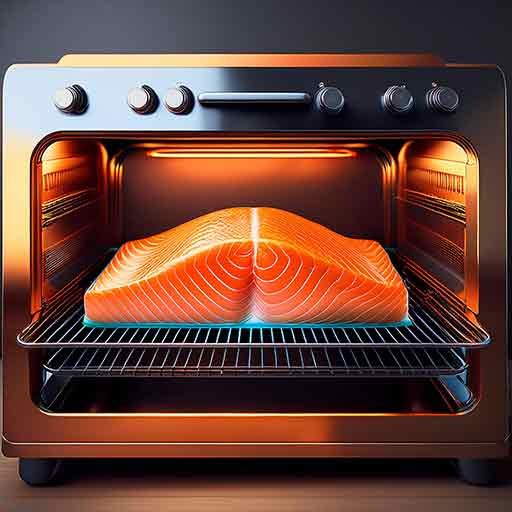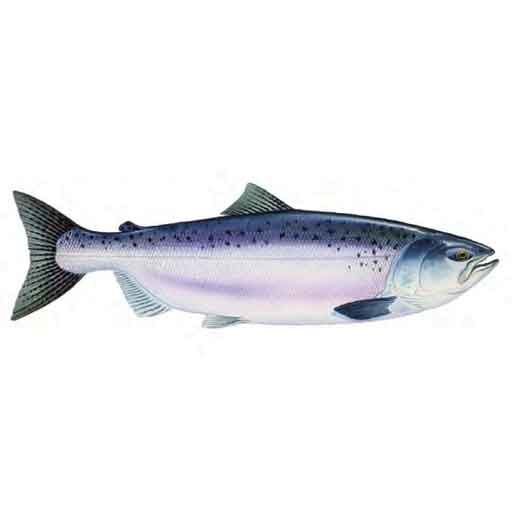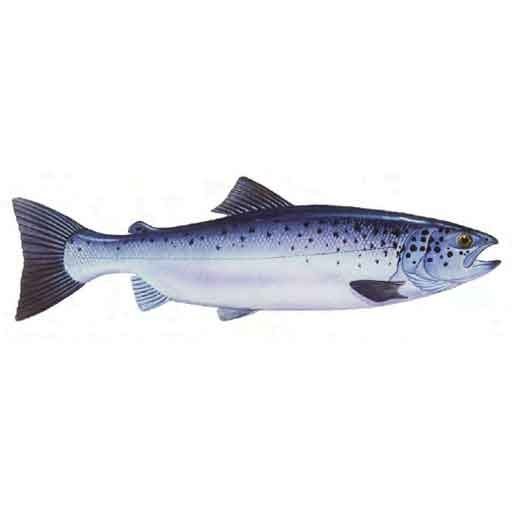Arctic Char can reach a maximum length of about 1m (3¼ feet). Their backs are dark brown or olive, with lighter sides fading to a lighter-colored belly. Colors vary considerably during spawning, especially in male arctic char – the entire body can be gold or orange, and the lower feathers are often edged with white. The species is believed to spawn from August to October in alternate years. Arctic Char is a popular rustling in the lakes of Kodiak Island in Alaska. They also congregate in the large lagoons of Bristol Bay in Alaska from May to July, feeding on salmon smolts that migrate out to sea at this time.
Arctic Char
Scientific Name: Salvelinus alpinus
Arctic char is a highly valued fish for its culinary attributes, making it a sought-after choice for many chefs and seafood enthusiasts. Its mild flavor, devoid of a strong fishy taste, and meaty texture with small flakes, make it versatile for various cooking methods such as poaching, baking, grilling, smoking, and searing. The high fat content of Arctic char contributes to its rich and flavorful profile, particularly when grilled or smoked, where it retains its moisture and develops a succulent texture.
The fish’s pink flesh, which cooks to white, adds a visually appealing element to any dish. Arctic char is also an excellent source of healthy fats, including omega-3 fatty acids, which are beneficial for heart health and brain development. Additionally, it is rich in protein, calcium, and vitamin D, making it a nutritious addition to any meal.
Given its adaptability to different cooking techniques and its nutritional benefits, Arctic char is a staple in many high-end restaurants and is also popular among home cooks. Its availability in various market forms, including whole, fillet, and steak, further enhances its culinary appeal. Overall, the Arctic char’s unique flavor profile, nutritional value, and versatility in cooking make it a prized ingredient in the culinary world.
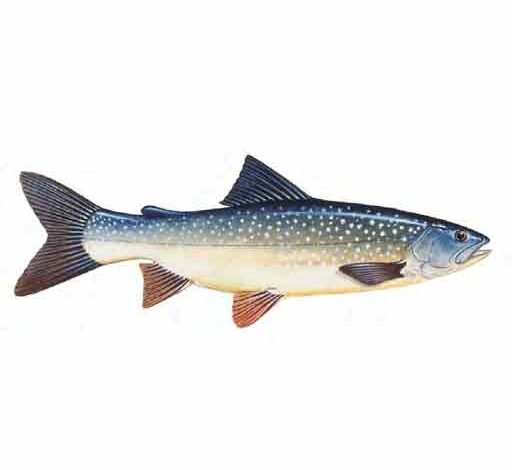
Culinary Values
- Taste: Mild, without a strong fishy taste
- Texture: Meaty, with small flakes
- Meat Color: Pink, cooks to white
- Round or Flat Fish: Round
- Fat Level: High fat content
- Mercury Level: Low, especially in sea-run char
- Iconic Dish: Not specifically mentioned, but often grilled or smoked
- Market Form: Whole, round, drawn, dressed, pan-dressed, butterflied, fillet, steak, wheel, center-cut
- Can Be Frozen: Yes
- Market Availability: Yes, especially farmed char
- Price: Generally expensive
Fishing
- Weight: Up to 20 lbs, typically 2-5 lbs in market
- Live In: Freshwater or saltwater
- Habitats: Lakes, rivers, sea, subarctic coastal waters
- Distribution: North America; Arctic Ocean; Scandinavia; Iceland; Greenland; northern North Atlantic Ocean; occasionally northern UK.
- Identification: Switch rod, small spey rod, single-handed rod with floating lines and long light leaders
- Body Type: Anadromous or landlocked
- Fishing Methods: Switch rod, small spey rod, single-handed rod with floating lines and long light leaders, Lure-, bait-, and fly-fishing.
- Game Fish: Yes
- Can be Farmed: Yes, primarily in Canada, Iceland, and USA
- Scientific Name: Barbus barbus (common barbel); also various species in the genus Barbus
- Taste: Delicate and flavorful when properly prepared; contrary to misconceptions about muddy flavor
- Texture: Exceptionally soft and delicate; breaks up easily during cooking
- Scientific Name: Tinca tinca
- Taste: Mild, earthy, and slightly sweet flavor
- Texture: Firm but tender when cooked
- Scientific Name: Pomoxis nigromaculatus
- Taste: Mild, delicately sweet flavor similar to bass or perch
- Texture: Tender and flaky
- Scientific Name: Micropterus salmoides.
- Taste: Mild, slightly sweet; influenced by diet and habitat (higher fat content enhances richness).
- Texture: Firm, flaky when fresh; proper thawing methods preserve structure (e.g., microwave-vacuum).
- Scientific Name: Oncorhynchus tshawytscha
- Taste: Pronounced buttery, rich
- Texture: Oily, flaky, and meaty
- Scientific Name: Salmo salar
- Taste: Rich, buttery, and slightly sweet
- Texture: Firm, flaky
